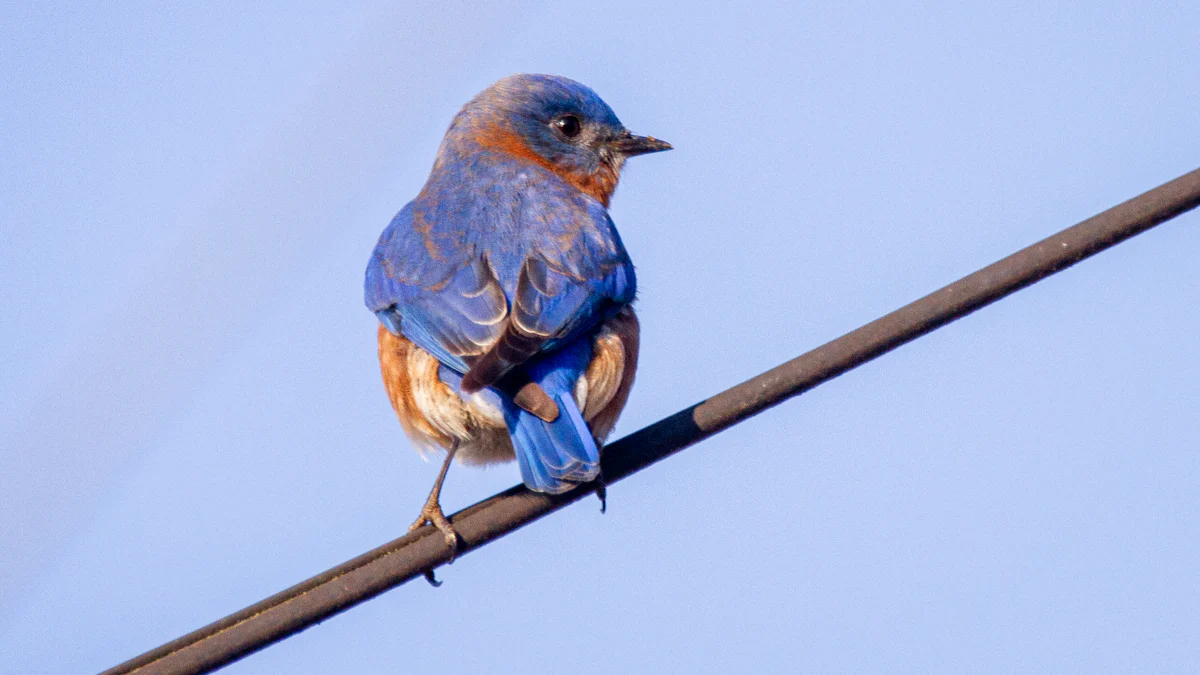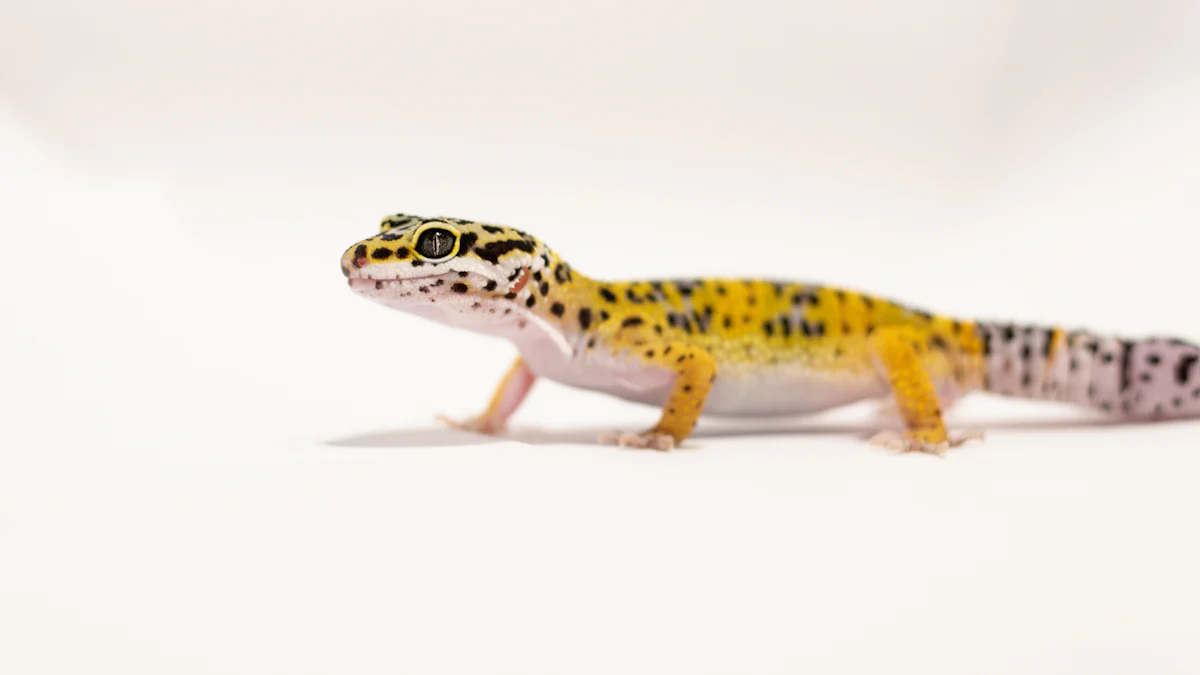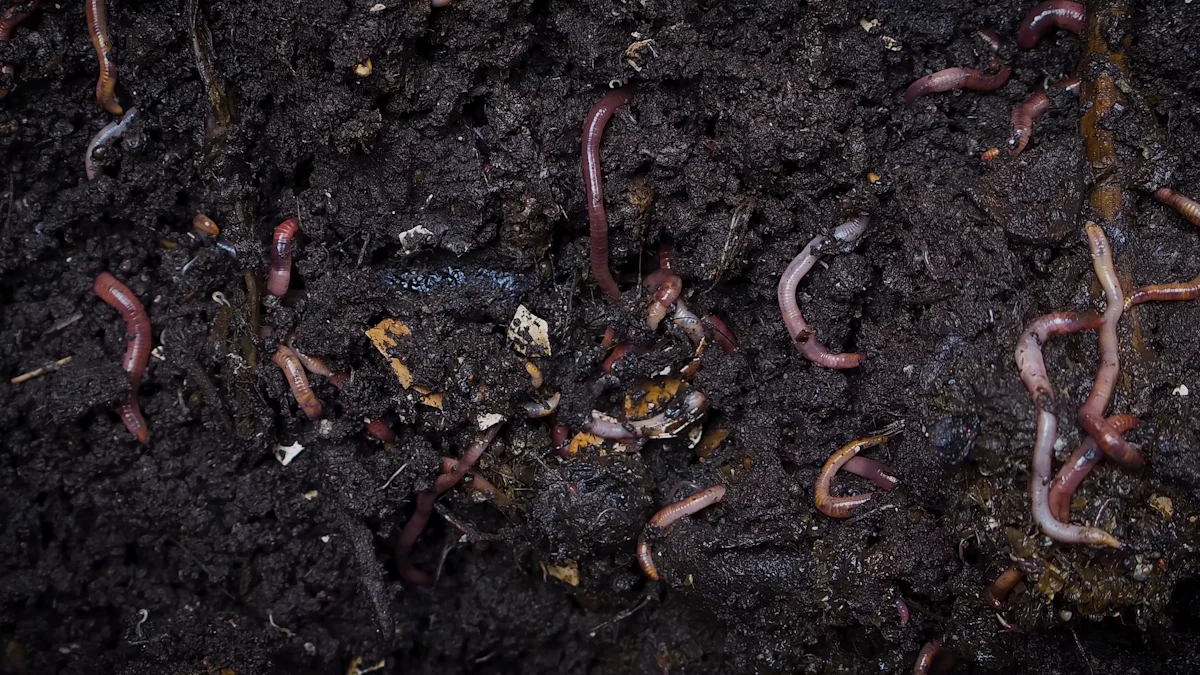
Pet owners often search for nutritious and convenient food options to keep their animals healthy and happy. Dried mealworm for pet use has emerged as a popular choice, offering a high-protein treat that supports energy and growth. Unlike live insects, dried mealworms are easy to store and require no maintenance, making them ideal for busy households. They cater to a variety of pets, from birds to reptiles, and even small mammals. However, while they provide numerous benefits, it’s essential to weigh their potential drawbacks before adding dried mealworm for pet diets.
Key Takeaways
- Dried mealworms are a high-protein treat, containing about 50% protein, which supports muscle development and overall health in pets.
- They are convenient to store, with a long shelf life and no need for refrigeration, making them ideal for busy pet owners.
- Dried mealworms cater to a variety of pets, including birds, reptiles, and small mammals, enhancing their diets with essential nutrients.
- Moderation is crucial; dried mealworms should not exceed 30% of a pet’s daily food intake to avoid digestive issues.
- Choose high-quality dried mealworms from reputable suppliers to minimize health risks associated with contamination.
- Introduce dried mealworms gradually into your pet’s diet to prevent digestive discomfort and ensure they enjoy the new treat.
- Consult a veterinarian for personalized feeding advice to ensure a balanced diet that meets your pet’s specific nutritional needs.
Understanding Dried Mealworm For Pet
What Are Dried Mealworms?
Definition and origin of dried mealworms.
Dried mealworms are the dehydrated form of mealworm larvae, which are the larval stage of the darkling beetle (Tenebrio molitor). These insects have been used as a food source for centuries due to their high nutritional value. By removing moisture through drying, mealworms become lightweight, easy to store, and long-lasting. This process also concentrates their nutrients, making them a dense and efficient food option for pets.
Common pets that benefit from dried mealworms.
Many pets enjoy dried mealworms as part of their diet. Birds, such as chickens, finches, and bluebirds, thrive on the protein and energy they provide. Reptiles, including geckos and bearded dragons, also benefit from their nutrient-rich composition. Small mammals, like hedgehogs and hamsters, find them to be a tasty treat. These versatile snacks cater to a wide range of animals, making them a popular choice for pet owners.
Why Are Dried Mealworms Used in Pet Diets?
Nutritional advantages over live mealworms.
Dried mealworms pack a powerful nutritional punch. They contain approximately 50% protein by weight, which supports muscle development, immune function, and overall vitality in pets. Essential fatty acids in dried mealworms promote healthy skin and shiny coats, while vitamins and minerals contribute to energy and growth. Unlike live mealworms, the drying process removes moisture, resulting in a more concentrated source of nutrients. This makes them an excellent choice for pets needing a protein boost.
Environmental sustainability and convenience.
Dried mealworms are not only good for pets but also for the planet. Producing mealworms requires significantly less land, water, and resources compared to traditional livestock farming. This makes them an environmentally friendly option for pet owners who care about sustainability. Additionally, dried mealworms are incredibly convenient. They have a long shelf life, require no refrigeration, and are easy to store. Pet owners can keep them on hand without worrying about spoilage or the hassle of maintaining live insects.
Benefits of Dried Mealworm For Pet

Nutritional Value
High protein and essential nutrients for pet health.
Dried mealworms stand out as a powerhouse of nutrition. They contain approximately 50% protein, which plays a vital role in muscle development and maintaining a strong immune system. Pets that consume dried mealworms often experience improved energy levels and better overall health. In addition to protein, these mealworms are packed with essential vitamins and minerals, such as iron and potassium, which support various bodily functions. Compared to many other pet food options, dried mealworms provide a more nutrient-dense choice, ensuring pets get the nourishment they need.
Benefits for energy, growth, and overall well-being.
The high protein content in dried mealworms fuels energy and supports growth, especially for young or active pets. Essential fatty acids found in these mealworms contribute to healthy skin and shiny coats, making them an excellent addition to a pet’s diet. Their nutrient profile promotes overall well-being, helping pets stay active and thrive. Whether used as a treat or a supplement, dried mealworms can enhance a pet’s vitality and quality of life.
Convenience and Storage
Long shelf life and easy storage.
Dried mealworms offer unmatched convenience for pet owners. Their long shelf life means they can be stored for months without spoiling, unlike live mealworms that require constant care. These dried snacks don’t need refrigeration, making them easy to keep on hand. Pet owners can store them in airtight containers, ensuring freshness and reducing the hassle of frequent trips to the store. This convenience makes dried mealworms a practical choice for busy households.
Reduced waste compared to live mealworms.
Live mealworms often come with challenges, such as spoilage and the need for maintenance. Dried mealworms eliminate these issues by providing a ready-to-use option that minimizes waste. Pet owners don’t have to worry about uneaten live insects dying or creating messes. With dried mealworms, every piece can be used, making them a more efficient and cost-effective choice in the long run.
Versatility in Pet Diets
Suitable for birds, reptiles, and small mammals.
Dried mealworms cater to a wide variety of pets, making them a versatile addition to any diet. Birds, such as chickens and wild songbirds, benefit from the protein and energy these mealworms provide. Reptiles, like geckos and turtles, enjoy their nutrient-rich composition. Small mammals, including hedgehogs and hamsters, find them to be a tasty and nutritious treat. This versatility ensures that dried mealworms can meet the dietary needs of different types of pets.
Can be used as a treat or dietary supplement.
Pet owners can use dried mealworms in multiple ways. They work well as a reward during training sessions or as a special treat to keep pets happy. Additionally, they can serve as a dietary supplement, providing an extra boost of protein and nutrients alongside regular meals. This flexibility allows pet owners to tailor their use of dried mealworms to suit their pet’s specific needs, ensuring a balanced and enjoyable diet.
Drawbacks of Dried Mealworm For Pet
Health Risks
Risk of choking or digestive issues.
Dried mealworms, while nutritious, can pose certain health risks to pets. Their hard, dehydrated texture may increase the risk of choking, especially for smaller animals or pets that eat too quickly. Owners should monitor their pets during feeding to ensure they chew properly. Additionally, some pets may experience digestive discomfort if they consume too many dried mealworms at once. Moderation is key, as experts recommend that dried mealworms should not exceed 30% of a pet’s daily food intake.
Potential contamination from unreliable suppliers.
The quality of dried mealworms varies significantly depending on the supplier. Low-quality products may contain harmful chemicals, pesticides, or contaminants that could harm pets. Pet owners should look for mealworms with consistent texture and color, free from mold or discoloration. Choosing reputable brands ensures safety and reduces the risk of contamination. High-quality dried mealworms not only protect pets but also provide the full nutritional benefits they offer.
Cost and Accessibility
Higher cost compared to other pet food options.
Dried mealworms often come with a higher price tag than many traditional pet food options. Their production process, which includes drying and packaging, contributes to the increased cost. For pet owners on a budget, this can make dried mealworms less appealing as a regular dietary addition. However, their long shelf life and concentrated nutrients may justify the expense for those seeking high-quality treats or supplements for their pets.
Balancing cost with nutritional benefits.
While dried mealworms are more expensive, their nutritional value can make them a worthwhile investment. They provide a dense source of protein, vitamins, and minerals, which can enhance a pet’s overall health. Pet owners should weigh the cost against the benefits and consider using dried mealworms as a supplement rather than a primary food source. This approach helps balance expenses while still providing pets with the advantages of this nutrient-rich snack.
Pet Preferences and Needs
Some pets may prefer live mealworms.
Not all pets enjoy the taste or texture of dried mealworms. Some animals, particularly reptiles and birds, may prefer the movement and moisture of live mealworms. This preference can make it challenging for owners to introduce dried mealworms into their pet’s diet. Observing a pet’s reaction and experimenting with different feeding methods can help determine whether dried mealworms are a suitable option.
Importance of a balanced diet and variety.
Dried mealworms should not serve as the sole food source for pets. A balanced diet that includes a variety of foods is essential for meeting all nutritional needs. While dried mealworms provide protein and essential nutrients, they lack the moisture and diversity found in other food options. Pet owners should combine dried mealworms with other foods to ensure their pets receive a well-rounded diet. Consulting a veterinarian can help create a feeding plan tailored to a pet’s specific requirements.
Practical Tips for Using Dried Mealworm For Pet

Safe Storage Practices
Best storage methods to maintain freshness.
Proper storage ensures dried mealworms stay fresh and safe for pets. Always keep them in a cool, dry place, away from direct sunlight or moisture. High humidity can cause them to spoil or develop mold, which could harm pets. Airtight containers work best for maintaining freshness. Plastic or glass jars with tight-fitting lids prevent air exposure and keep pests like ants or moths out. For added protection, store the container in a pantry or cupboard where the temperature remains stable.
Preventing contamination during storage.
Contamination can compromise the quality of dried mealworms. Always handle them with clean hands or utensils to avoid introducing bacteria or dirt. Avoid storing them near strong-smelling items like spices, as they may absorb odors. If the packaging gets damaged, transfer the mealworms to a clean, airtight container immediately. Regularly check for signs of spoilage, such as discoloration or an unusual smell, and discard any compromised mealworms to keep pets safe.
Introducing Dried Mealworms to Your Pet
Gradual introduction to avoid digestive issues.
Pets may need time to adjust to new foods, including dried mealworms. Start by offering small amounts mixed with their regular diet. Observe how they respond over a few days. If they show no signs of digestive discomfort, such as diarrhea or reduced appetite, gradually increase the portion size. This slow introduction helps their digestive system adapt and reduces the risk of any adverse reactions.
Determining the right portion size for your pet.
The ideal portion size depends on the pet’s size, species, and dietary needs. For small animals like hamsters, a teaspoon of dried mealworms as a treat works well. Larger pets, such as chickens or reptiles, may require a handful. Avoid overfeeding, as dried mealworms are nutrient-dense and high in protein. Experts recommend that dried mealworms make up no more than 30% of a pet’s daily diet. Consulting a veterinarian can help determine the best portion size for specific pets.
Dried mealworms offer a range of benefits, including high nutritional value and easy storage. They provide pets with essential protein and nutrients while being convenient for pet owners. However, drawbacks like potential health risks and higher costs should not be overlooked. Every pet has unique dietary needs, so it’s crucial to consider their preferences and overall health when introducing new foods.
"Consulting with a veterinarian or other animal care professional can help you make an informed decision about the best feeding option for your pet." – Veterinarian, Pet Nutrition Expert
Always seek advice from a veterinarian before making significant changes to your pet’s diet. Their guidance ensures your pet stays healthy and happy.
FAQ
What are dried mealworms?
Dried mealworms are the dehydrated larvae of darkling beetles. These protein-packed treats are popular among pet owners for animals like chickens, birds, reptiles, and even fish. The drying process removes moisture, making them lightweight, easy to store, and long-lasting. Pet stores often stock them, so they’re simple to find and incorporate into your pet’s diet.
Are dried mealworms safe for all pets?
Dried mealworms are generally safe for many pets, including birds, reptiles, and small mammals. However, they may not suit every animal. Some pets might have difficulty chewing or digesting them due to their hard texture. Always monitor your pet when introducing dried mealworms and consult a veterinarian if you’re unsure about their suitability.
How should dried mealworms be stored?
Proper storage is essential to maintain freshness and prevent contamination. Keep dried mealworms in an airtight container in a cool, dry place away from sunlight and moisture. Avoid storing them near strong-smelling items, as they can absorb odors. Regularly check for signs of spoilage, like discoloration or unusual smells, and discard any compromised mealworms.
What are the nutritional benefits of dried mealworms?
Dried mealworms are rich in protein, essential fatty acids, and nutrients like iron and potassium. These nutrients support muscle development, energy levels, and overall health in pets. Their high protein content makes them an excellent supplement for active or growing animals. They also promote healthy skin and shiny coats in pets.
Can dried mealworms replace a pet’s regular diet?
Dried mealworms should not replace a pet’s regular diet. While they are nutrient-dense, they lack the moisture and variety needed for a balanced diet. Use them as a treat or dietary supplement alongside other foods. A diverse diet ensures pets receive all the nutrients they need to thrive.
How can dried mealworms be introduced to a pet’s diet?
Introduce dried mealworms gradually to avoid digestive issues. Start with small amounts mixed into your pet’s regular food. Observe their reaction over a few days. If they tolerate the mealworms well, slowly increase the portion size. This method helps pets adjust to the new food without discomfort.
What are some best practices for incorporating dried mealworms into meals?
To incorporate dried mealworms effectively, use them as a treat or mix them with other foods. For birds, sprinkle them on seeds or suet cakes. For reptiles, offer them as part of a varied diet. Always ensure the portion size matches your pet’s size and dietary needs. Moderation is key to preventing overfeeding.
Are dried mealworms environmentally friendly?
Yes, dried mealworms are an eco-friendly option. Producing mealworms requires less land, water, and resources compared to traditional livestock farming. This makes them a sustainable choice for pet owners who want to reduce their environmental impact while providing nutritious food for their pets.
Why do some pets prefer live mealworms over dried ones?
Some pets, like reptiles and birds, may prefer live mealworms because of their movement and moisture content. Live mealworms mimic natural prey, making them more appealing to certain animals. If your pet shows a preference for live mealworms, consider alternating between live and dried options to provide variety.
How much dried mealworm should be fed to a pet?
The portion size depends on the pet’s species, size, and dietary needs. For small animals like hamsters, a teaspoon of dried mealworms works well as a treat. Larger pets, such as chickens or reptiles, may require a handful. Experts recommend that dried mealworms make up no more than 30% of a pet’s daily diet. Consult a veterinarian for personalized advice.


